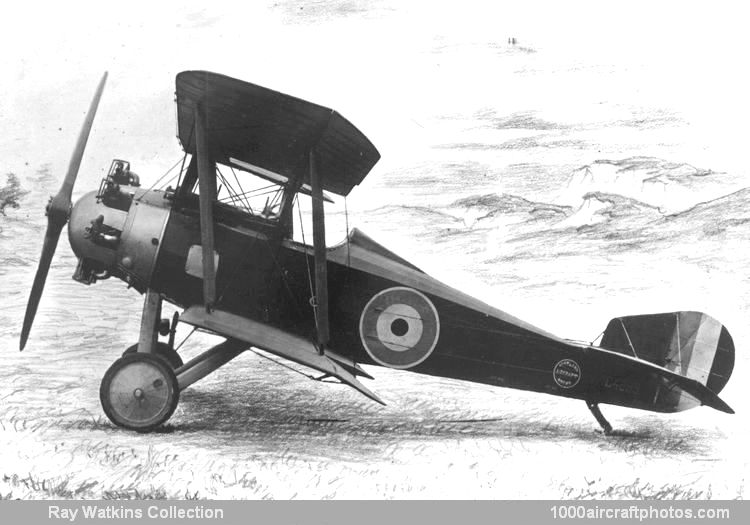11/30/2010. Remarks by Johan Visschedijk: "Although disappointed at the failure of the N.1B Scout to win a production order, the official trials of these two seaplane prototypes had been encouraging to Westland's management, which was soon involved in the design of a single-seat fighter to meet the requirements of the RFC's Specification A.1(a). This called for a maneuverable fighter with a good rate of climb, and in late 1917 Robert Bruce and Athur Davenport put their ideas together in the hopes of creating a high-performance aircraft that would win a worthwhile production contract.
Identified initially as the Westland Wasp, because of the chosen power plant, the 170 hp ABC Wasp I seven-cylinder radial engine, the biplane was of wooden construction covered with fabric, the equal span wire-braced wings both had ailerons. The tail skid landing gear had main units of divided axle type carried on braced V-struts and rubber bungee shock-absorption. As the Wagtail was intended as a high-altitude fighter, there was provision for the installation of oxygen equipment in the open cockpit.
A mockup had been built for inspection by January 1918, and as a result three prototypes were ordered under contract 41838/1/17 and serials C4291 to C4293. These were fitted with two fixed forward-firing synchronized Vickers machine guns. Required for competitive evaluation against the BAT Bantam, designed by Frederick Koolhoven, and the Sopwith Snail, all three companies had elected to use the same power plant. By the time that Westland's first prototype airframe was complete it had been given the company name of Wagtail.
This was in early April, and there was some delay before the Wasp engine was received and installed. A few days later, about mid-April 1918, it was flown for the first time by test pilot Captain Alexander. It proved to be highly maneuverable, but early modification showed that there was a shortcoming which needed improvement. As first flown, both wings had a dihedral of 2° 30'; they were rerigged so that the lower wing had no dihedral and the upper wing 5°. This resulted in lowering the upper wing center section and restricting the pilot's view.
It was remedied by eliminating the center section trailing edge, and by providing a large cut-out in the center section, between the spars, to increase the field of view. In addition, the area of the tail plane, elevators, and fin were reduced, and that of the rudder increased. It was in this form that the prototypes were evaluated by the RAF, flown in mock combat against a captured Fokker D.VIII. In competition with the submissions of the Bantam and Snail, the Wagtail proved to be the best all-rounder.
Once again Westland was unfortunate, due to the unreliability of the Wasp I engine, only two more Wagtails were to be built post-war under contract 35a/454/C448 and serials J6581 to J6582. They served as flying test beds for the improved 200 hp ABC Wasp II radial engine, later they were provided with a strengthened landing gear, a slightly shortened fuselage nose, and fitted with an 160 hp Armstrong Siddeley Lynx seven-cylinder air-cooled radial engine."
